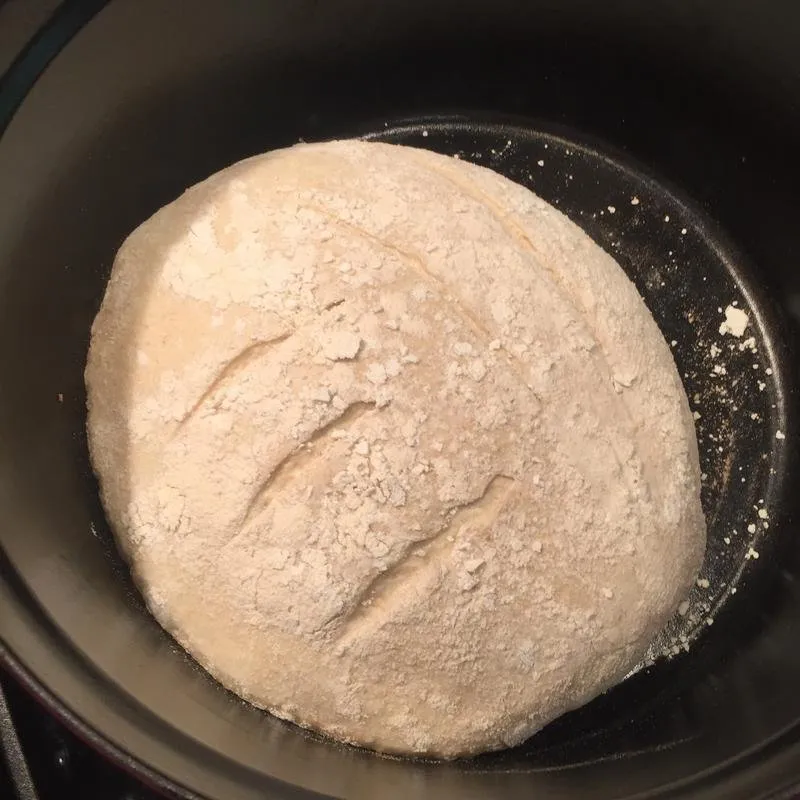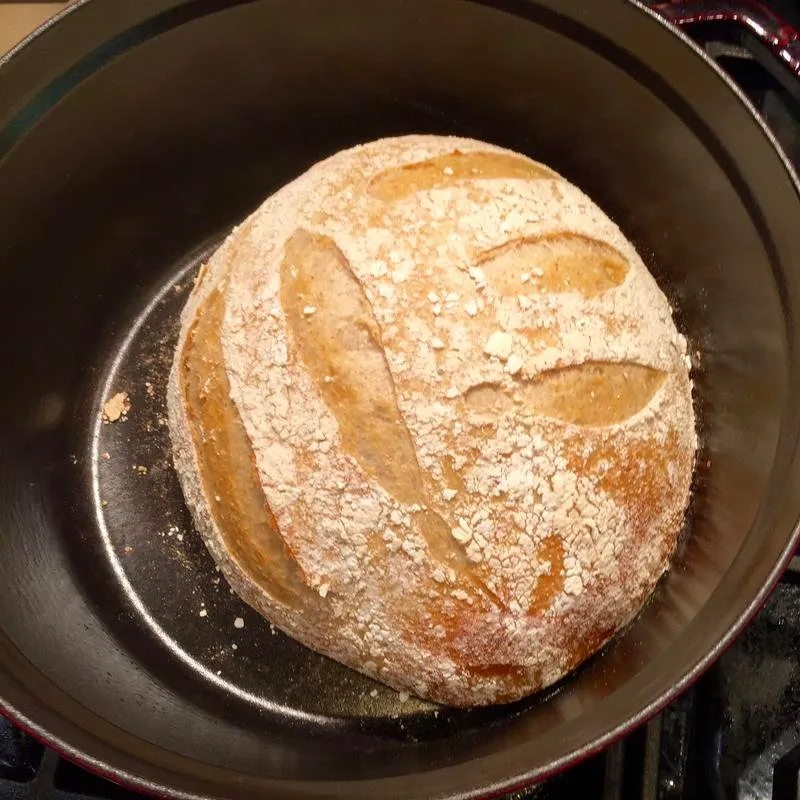
In the fall of each year, as it is getting colder, I get the urge to bake sourdough bread. When I say sourdough bread I am talking about the French version called, pain au levain. Pain au levain is mildly sour in taste, but is made with a sour starter or wild yeast called levain. In America, where I live, we have San Fransisco sourdough which is very sour in taste. I like both bread but I usually make the french version.
The levain
The levain is the wild yeast that will make the bread rise. It is far superior to commercial yeast and It helps to keep the bread fresh for longer. A bread made with wild yeast is "fresh" for around three days, vs a bread made with commercial yeast that will get stale in one day.
In the past, I have made and kept wild yeast cultures for my baking. Now that I mainly bake bread in the fall and winter, I buy a bit of sourdough starter from King Arthur Flour in the early fall. Their yeast culture has been kept alive for over 100 years! I keep the starter alive by feeding it flour and water and I use that starter from fall until late winter. At the end of winter when I do not want to bake bread any more, I give the starter away to someone that is actively baking.
When I first started baking bread, I made my wild yeast using organic grapes, water and flour based on the recipe from Nancy Silverton's book, Breads from the La Brea Bakery. This book was revolutionary for me. I had never had bread like this before. I then took a class in naturally leavened breads with Richard Bourdain of the Berkshire Mountain Bakery. This hands-on class solidified the knowledge that I learned in Nancy's book. Richard was the mentor and first teacher of famous San Francisco baker Chad Robertson of Tartine Bakery. I remember having Chad's bread in West Marin, CA when he was still working by himself from a wood fired oven, making around 200 loaves a day! That bread I bought at a local farmer's market and I still remember it. It was a large boule and It was flavored with rosemary and sea salt.
You can make your own starter (around a two week process) or buy one from the resources that I listed above. They will both produce great bread. After you have made or bought your starter you need to keep it alive. If you keep the starter outside of the fridge then you will need to feed it everyday. If you keep it in the fridge you can feed it every few days. Either way when it is time to feed the starter I give it the following:
- One cup of flour
- One cup of water
- One Tablespoon of Starter
You will notice that it starts to get very active after feeding. After a few hours when the starter looks like the below film, it is ready. A test is that the starter is ready when it floats in water.
The starter should smell pleasantly yeasty and not sharply alcoholic.
The Recipe
I have been using Chad Robertson's recipe for basic country bread, for the last few years. His book is called Tartine Bread. I have made several variations of the basic country bread over time but I always come back to the original. It makes a crusty loaf that is mildly sour in flavor. Below I will give an abbreviated method to make the bread. If you want to make the bread exactly as Chad does I would recommend getting his book in the link above.
Here is Chad's Recipe
- 700 Grams water
- 200 Grams levain
- 900 Grams White Flour
- 100 Grams Whole Wheat Four
- 20 Grams Salt dissolved into 50 Grams of water
Here is Chad's Method
- Mix ingredients 1 through 4 in a plastic tub
- Let the mixture sit for thirty minutes
- Add the salty water mixture
- During the next three hours turn the dough every 30 minutes. To turn the dough you pull the dough from one side and fold it over to the other side. and repeat this process on all four sides. This technique eliminates the need to knead the dough. As the dough gets more billowy, be more gentle with your folds.
- Lightly flour a table and pour the dough out onto the table. Divide the dough in two
- Gently fold the dough into a tight mass.
- Let the dough rest, loosely covered in a towel for 30 minutes
- Fold the dough in thirds in both directions
- Invert the dough into a flour dusted bread basket
- Let the dough rise, covered for 3 to 4 hours

Baking
- Preheat the oven to 500F and put a dutch oven into the oven to get hot for 30 minutes
- You will need a baker's lame, super sharp knife or a razor blade to cut the loaf
- Carefully turn the proofed dough into the dutch oven
- Quickly score the dough and put the lid on and put the bread into the oven
- After 20 minutes the dough will have expanded to full size
- Remove the lid and let the dough bake for 20 more minutes
- Let the bread cool for at least 30 minutes before eating


Here is the bread at the 20 minute mark
After the bread has cooled for 30 minutes it will be ready to eat

Since this is my first bread of the year I can see several mistakes! But it tasted so good! I will fix those mistakes and show you more breads in this series as I make them. Thank you for reading my blog today and If you have any questions please ask them in the comments section below.
Thank You!
Steve

